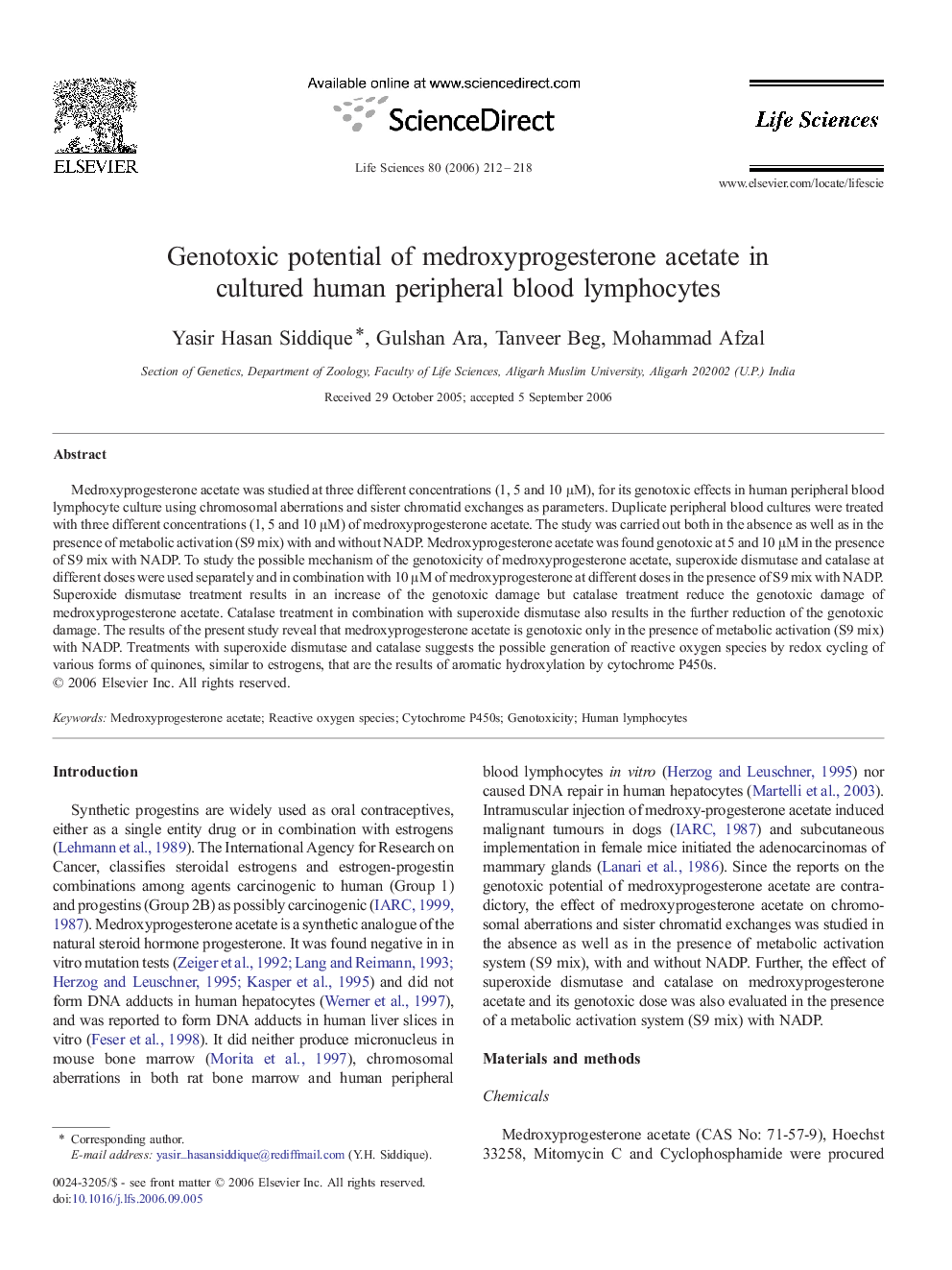| Article ID | Journal | Published Year | Pages | File Type |
|---|---|---|---|---|
| 2553724 | Life Sciences | 2006 | 7 Pages |
Medroxyprogesterone acetate was studied at three different concentrations (1, 5 and 10 μM), for its genotoxic effects in human peripheral blood lymphocyte culture using chromosomal aberrations and sister chromatid exchanges as parameters. Duplicate peripheral blood cultures were treated with three different concentrations (1, 5 and 10 μM) of medroxyprogesterone acetate. The study was carried out both in the absence as well as in the presence of metabolic activation (S9 mix) with and without NADP. Medroxyprogesterone acetate was found genotoxic at 5 and 10 μM in the presence of S9 mix with NADP. To study the possible mechanism of the genotoxicity of medroxyprogesterone acetate, superoxide dismutase and catalase at different doses were used separately and in combination with 10 μM of medroxyprogesterone at different doses in the presence of S9 mix with NADP. Superoxide dismutase treatment results in an increase of the genotoxic damage but catalase treatment reduce the genotoxic damage of medroxyprogesterone acetate. Catalase treatment in combination with superoxide dismutase also results in the further reduction of the genotoxic damage. The results of the present study reveal that medroxyprogesterone acetate is genotoxic only in the presence of metabolic activation (S9 mix) with NADP. Treatments with superoxide dismutase and catalase suggests the possible generation of reactive oxygen species by redox cycling of various forms of quinones, similar to estrogens, that are the results of aromatic hydroxylation by cytochrome P450s.
